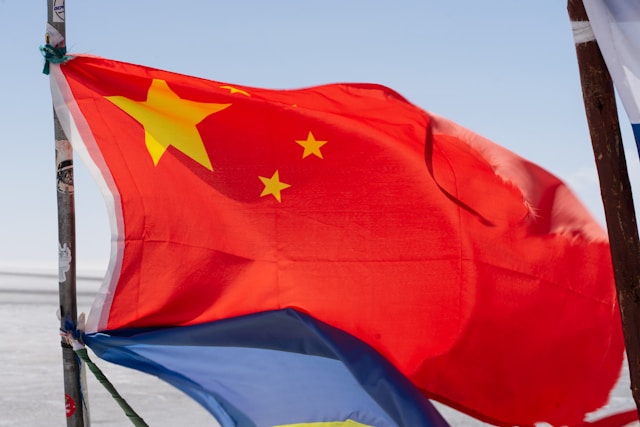Eli Lilly & Co (LLY): Technical Analysis
$952.79
Eli Lilly & Co (LLY): Technical Analysis
05 Nov 2025, 17:14


China Strengthens Latin American Trade with New Megaport on Peruvian Coast
China has made a significant move to bolster its trade influence in Latin America with the inauguration of a new Megaport on the Peruvian coast. The Chancay port, a $3.5 billion project funded by China’s state-owned Costco Shipping, was officially opened this weekend, with Chinese President Xi Jinping in attendance. This development is part of China’s broader strategy to solidify trade routes and economic ties in South America, a region where U.S. influence has waned in recent years.
The Chancay port, hailed as a "nerve center" by Peruvian President Dina Boluarte, is expected to revitalize Peru’s economy by facilitating faster and more efficient trade between South America and Asia. It reduces shipping times from 35 to 23 days, benefiting countries like Chile, Ecuador, Colombia, and Brazil, which are projected to leverage the port for exporting goods to Asia. Moreover, the port can accommodate ultra-large container vessels, positioning it as a vital hub in the Pacific trade network.
This port also allows Chinese exports to bypass the United States entirely, underscoring the strategic importance of the facility. By opening direct trade channels with Latin America, China is capitalizing on what some analysts describe as U.S. complacency in its "backyard."
The opening of Chancay comes at a time of heightened tensions between the U.S. and China. President-elect Donald Trump has signaled a tough stance on Chinese imports, with proposed tariffs as high as 60%. Analysts view the port as a calculated move by China to secure alternative trade pathways amid a potential U.S.-China trade war.
The U.S. military has expressed concerns over Chancay's potential dual-use capabilities. General Laura Richardson warned that such facilities could serve strategic naval purposes for China’s People’s Liberation Army. She noted, "China is playing the long game." Whether these concerns materialize or not, the port highlights China’s growing presence in a region historically dominated by the United States.
China’s efforts to deepen ties with Latin America extend beyond the Chancay port. Through its Belt and Road Initiative (BRI), Beijing has forged infrastructure partnerships with nearly 150 countries since 2023, including several in South America. Monica de Belle from the Pearson Institute for International Economics noted that the U.S. has largely neglected the region, allowing China to rapidly expand its influence. She stated, "The U.S. has been absent from Latin America for so long... that's going to be problematic."
Chinese President Xi Jinping’s regular visits to South America starkly contrast with U.S. President Joe Biden’s minimal engagement in the region. Xi’s consistent diplomatic efforts have bolstered China’s relationships across the continent, while the U.S. has been perceived as focusing primarily on issues like immigration and drug control.
Chancay’s opening marks a turning point in South American trade, but it also poses challenges for the United States. South American nations like Peru, Chile, and Colombia currently enjoy bilateral free trade agreements with the U.S., but these agreements could face scrutiny under the Trump administration’s anticipated trade policies. Additionally, the upcoming 2026 review of the United States-Mexico-Canada Agreement (USMCA) could influence Latin America’s perception of U.S. trade priorities.
China’s growing influence may also shift consumer markets. Countries like Chile and Brazil recently scrapped tax exemptions on low-value foreign purchases, reflecting increased demand for affordable Chinese goods. This demand could further integrate Latin America into China’s economic orbit.
As the possibility of a U.S.-China trade war looms, Latin America finds itself at the center of a global power struggle. While de Belle emphasizes that the region does not need to choose between the two superpowers, any forced alignment would be detrimental. For now, China’s proactive engagement appears to be outpacing the U.S., signaling a potential reconfiguration of global trade alliances.
The Chancay port symbolizes China’s strategic foothold in Latin America, reshaping the economic and geopolitical dynamics of the region. As the U.S. grapples with its trade policies and regional relationships, South America seems poised to deepen its ties with Asia. Whether this shift benefits the region or exacerbates existing tensions depends on how the U.S. and China navigate their competing interests in the years to come.
Source: BBC.co.uk